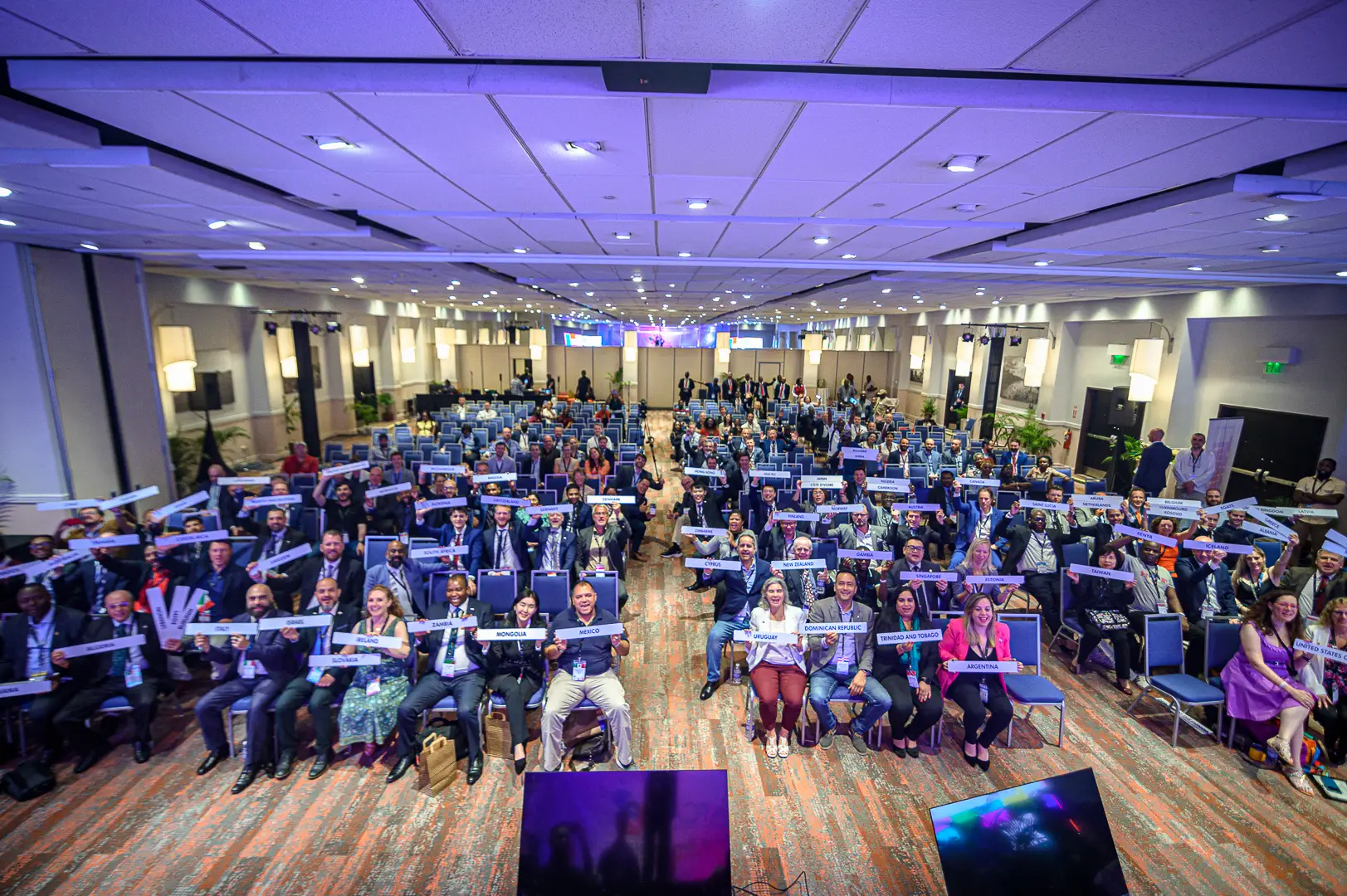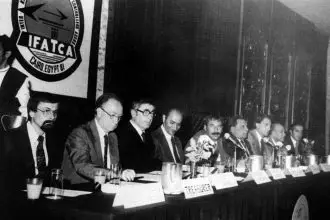
by Philippe Domogala
IFATCA Contributing EditorEvents like the IFATAC Annual Conference are excellent opportunities to experience flying outside my aeroclub in Germany. Ahmed from the United Arab Emirates Conference Organising Committee introduced me to Capt. Hassan, the owner of a local flying club. With his help, we organised a one-and-a-half-hour flight above Dubai in a gyrocopter.
Flying VFR in 45˚C is challenging in aircraft that use standard air-cooled engines. The only viable options are therefore ultra-light, aka microlights or sport aircraft, that use the well-known ROTAX water-cooled engines. And that is exactly what the Aviation Club in Abu Dhabi does. They have a fleet of seven fixed-wing aircraft and seven gyrocopters. But even then, the extreme temperature remains a challenge. The club is based in Kizad (ICAO: OMAG), halfway between Dubai and Abu Dhabi. The club was founded in 1983, but it moved to the current location in 2014. The airfield has a 900m asphalt runway (12-30) with a parallel taxiway. There is also a sky diving operation that uses a Twin Otter with turbine engines.
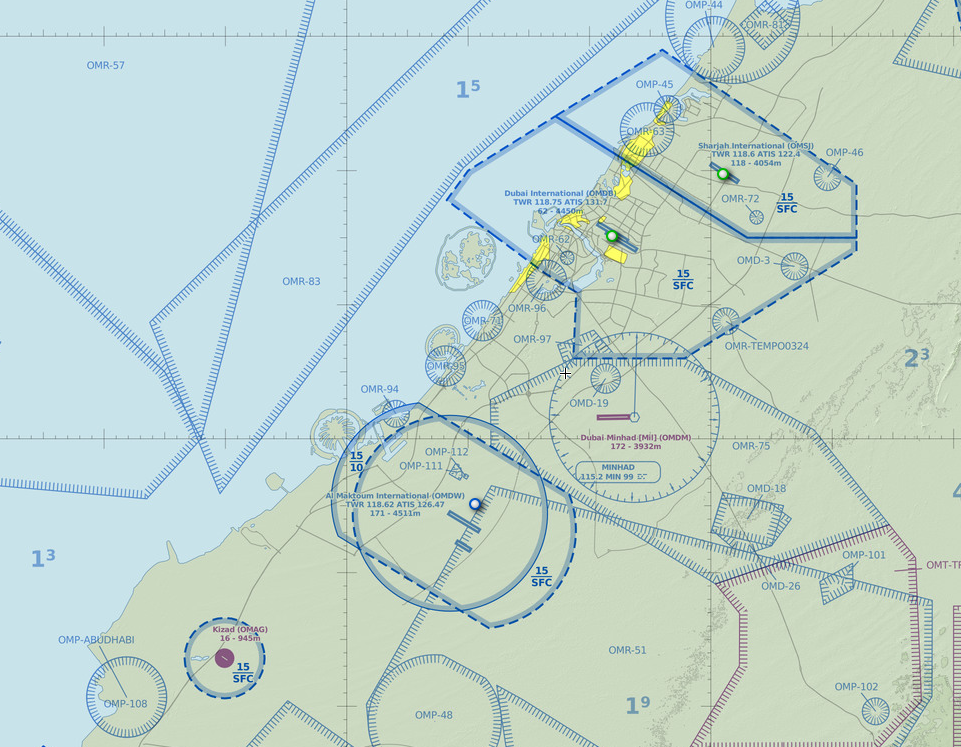
To escape the high temperatures, they usually fly early in the morning, from sunrise until about 10 o’clock, and again from about ±16:00 until sunset, thus avoiding the highest temperatures. While you can freely fly 3 NM around the airport and stay below 1500ft, any other VFR flight outside of the airfield circuit needs a VFR flight plan filed 30 minutes before. The close location of both Dubai and Abu Dhabi international airports, military airbases and various other airspace restrictions makes it very complex. Specific VFR routes and altitude restrictions must be followed. You are continuously monitored by the Flight Information Service (FIS) and various approach control sectors.
After a good briefing, my pilot and flight instructor, Mohamed, took me to his Magni Gyro M22 Plus. This modern aircraft uses a 140 HP Rotax 915. It flies relatively fast for a gyrocopter, cruising at 140 Km/h or 75 Kts. It needs around 200m for take-off and lands in 50m at 20 Kts. It has an open cockpit, so it’s like flying a convertible, which is lovely in the given circumstances: despite taking off at 17:00, the outside air temperature was still 42˚C. The vibrations are moderate compared to a helicopter, and the flight is relatively smooth. By design, a gyrocopter absorbs turbulence better than a fixed-wing aircraft. The main thing to remember is not to pull any negative G’s, which are a no-go in this aircraft type.
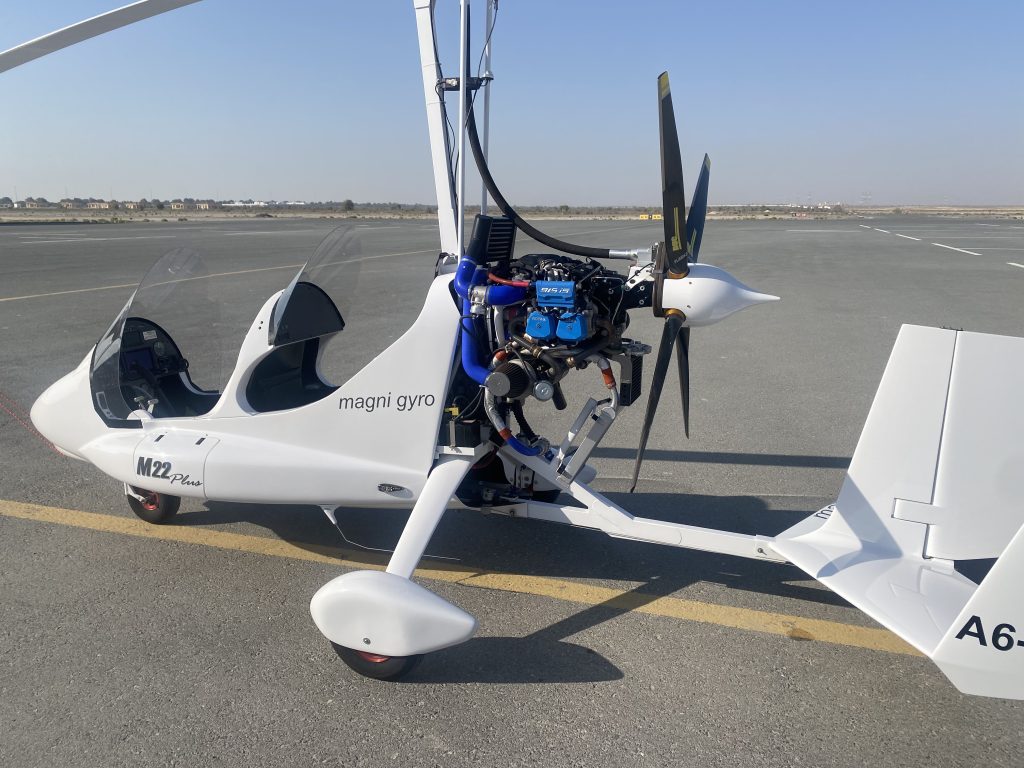
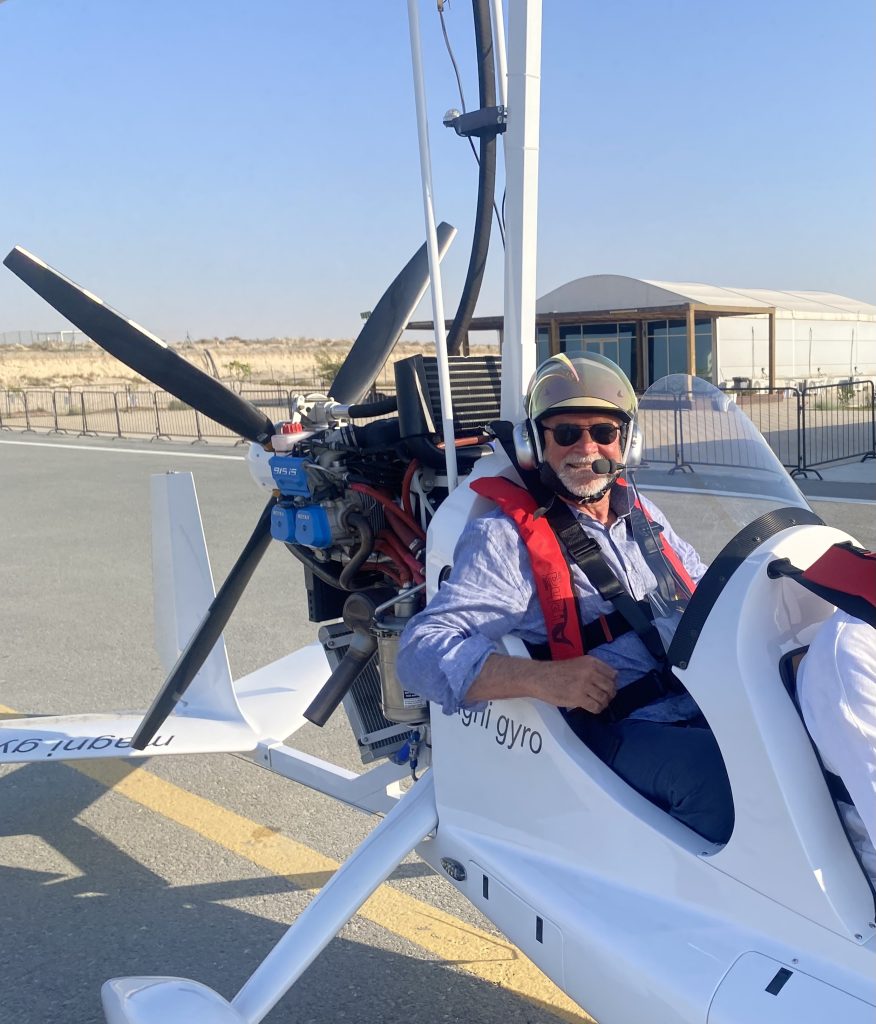
We decided to fly over Dubai: both Palm Islands are free to fly over, unlike the city centre. It would have been nice to fly around and below the Burj Khalifa, still the highest building in the world at 828m or 2717ft, but unfortunately, it is too close to Dubai International Airport (OMDB). Luckily, Palm Island is a spectacular sight too. Construction of a second, larger island is underway, and while this is still in the early stages, the final shape of this pharaonic project is already clearly visible! Throughout the flight, we needed to make frequent position reports to ATC. We also needed to remain between 1500 and 2000 feet to stay below the departure and arrival routes of the various airports around us, especially Dubai’s newest Al Maktoum airport (OMDW), which has a parallel runway approach that ends exactly over the Palm Islands.
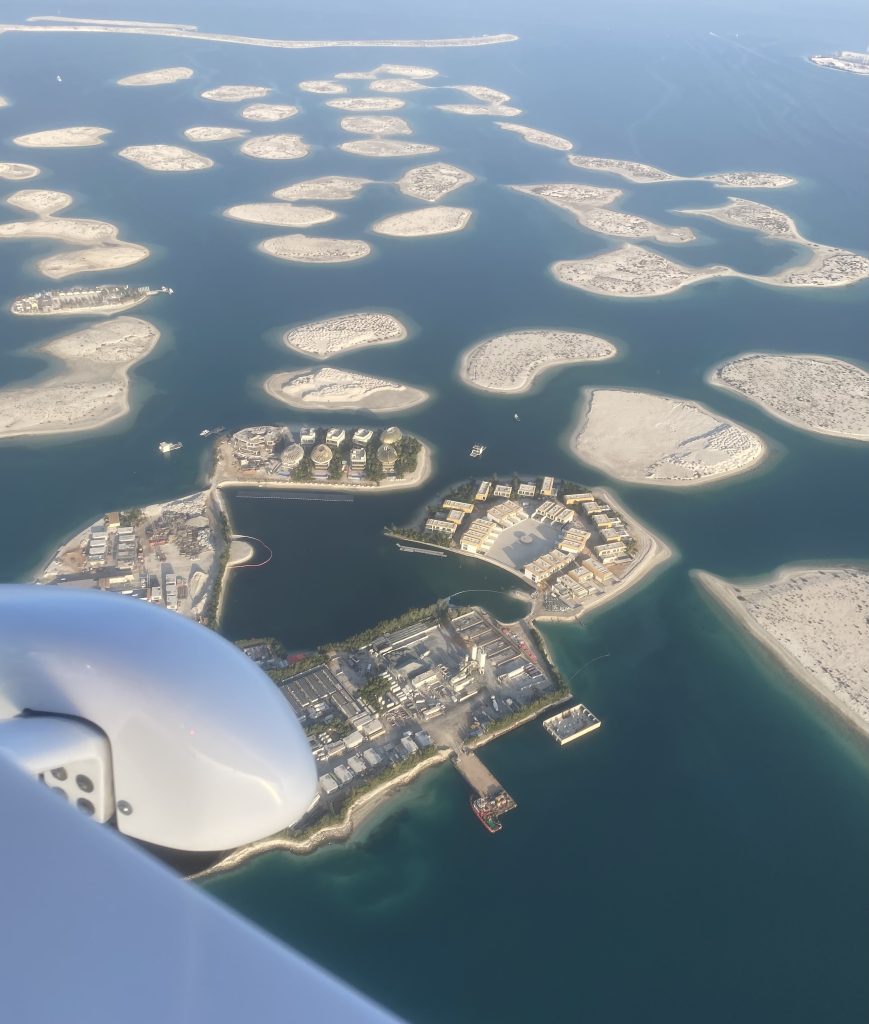
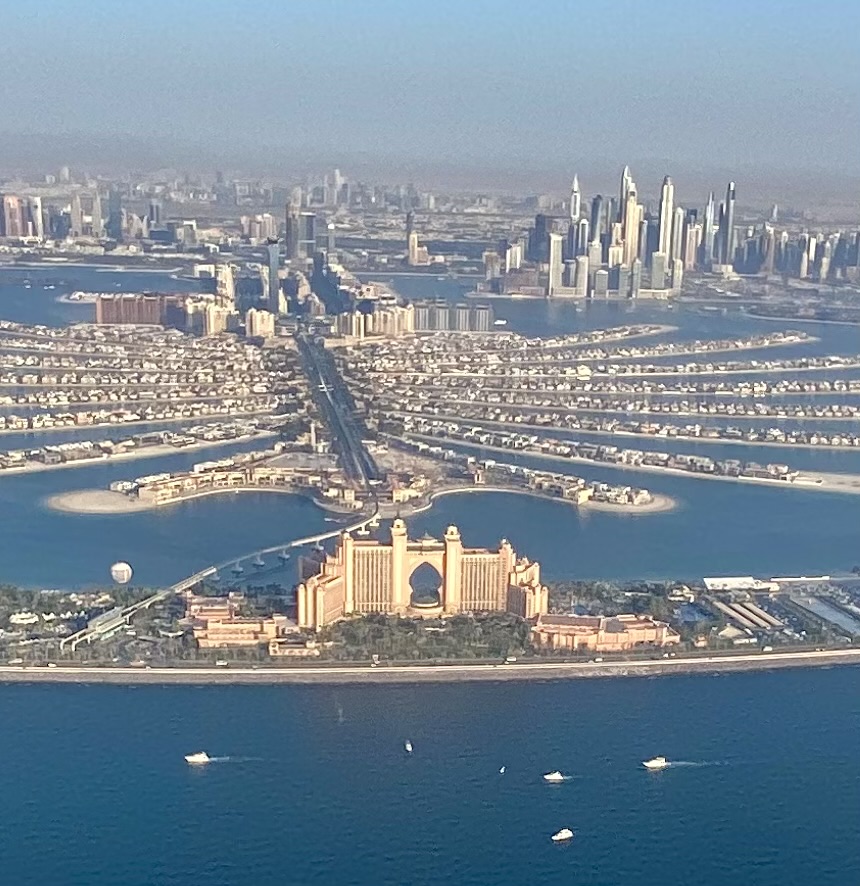
The coastline is also spectacular, with small islands and the occasional mansion, complete with palm trees, a large yacht, and a helicopter parked outside. Money is everywhere in Dubai.
Flying VFR in the UAE is feasible and very much worth it, even with the restrictions. If you have the opportunity and want to try it for yourself, contact the Abu Dhabi Sports Aviation Club | ADSAC. You won’t be disappointed.





